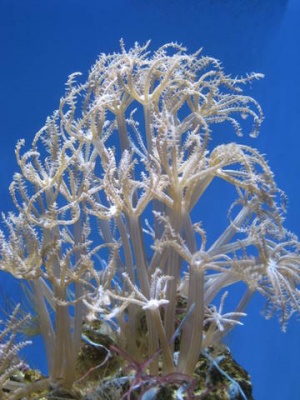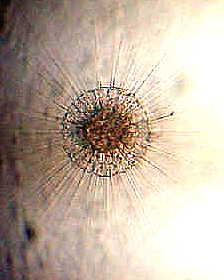Difference between revisions of "Invertebrate Zoology"
Frank Smith (Talk | contribs) |
|||
| (46 intermediate revisions by 2 users not shown) | |||
| Line 1: | Line 1: | ||
| − | <span style="font-size: large"> INVERTEBRATE ZOOLOGY: EEB 4275 FALL | + | <span style="font-size: large"> INVERTEBRATE ZOOLOGY: EEB 4275 FALL 2012</span><br/> |
<br> | <br> | ||
[[Image:Invert1.jpg|300px|right]] | [[Image:Invert1.jpg|300px|right]] | ||
| Line 7: | Line 7: | ||
<br/> | <br/> | ||
| + | <br/> | ||
'''Professor: Dr. J.N. Caria'''<br/> | '''Professor: Dr. J.N. Caria'''<br/> | ||
| Line 14: | Line 15: | ||
| − | TA: | + | '''TA: Frank Smith'''<br/> |
| − | office: | + | office: BioPharm 322<br/> |
| − | phone: | + | phone: 486-6215<br/> |
| − | email: | + | email: frank.smith@uconn.edu<br/> |
<br/> | <br/> | ||
| − | Lecture | + | '''Important Documents'''<br/> |
| − | Laboratory Schedule: | + | Lecture Syllabus: {{pdf|http://hydrodictyon.eeb.uconn.edu/eebedia/images/e/e2/EEB_4275_Lect_syllab_2012_rev.pdf}}<br/> |
| + | Laboratory Schedule: {{pdf|http://hydrodictyon.eeb.uconn.edu/eebedia/images/0/08/EEB_4275_Lab_syllab_2012_rev.pdf}}<br/> | ||
| + | Grading Scheme: {{pdf|http://hydrodictyon.eeb.uconn.edu/eebedia/images/7/74/Grading_EEB_4275_F12.pdf}}<br/> | ||
| + | Invertebrate Classification: {{pdf|http://hydrodictyon.eeb.uconn.edu/eebedia/images/c/c3/Invert_classif_%26_diversity.pdf}}<br/> | ||
| + | Invertebrate Higher Taxon Names: {{pdf|http://hydrodictyon.eeb.uconn.edu/eebedia/images/4/4a/Invert_higher_taxon_names.pdf}}<br/> | ||
| − | |||
| − | |||
| − | |||
| − | |||
| − | |||
| + | '''Lecture Exam 1 Materials'''<br/> | ||
| + | Study Guide: {{pdf|http://hydrodictyon.eeb.uconn.edu/eebedia/images/b/ba/Rev_Study_Guide_Exam1.pdf}}<br/> | ||
| + | Fall 2010 Exam 1: {{pdf|http://hydrodictyon.eeb.uconn.edu/eebedia/images/8/86/Exam_1_EEB_4275_Fall_2010.pdf}}<br/> | ||
| + | |||
| + | '''Lecture Exam 2 Materials'''<br/> | ||
| + | Fall 2010 Exam 2: {{pdf|http://hydrodictyon.eeb.uconn.edu/eebedia/images/5/5b/Exam_2_EEB_4275_Fall_2010.pdf}}<br/> | ||
| + | |||
| + | |||
| + | [[Image:Actinosphaerium.jpg|300px|right|frame|Here's an image taken of ''Actinospaerium'' in the Invert night lab! It sure is a photogenic protist.]] | ||
| + | |||
| + | '''Research Articles of the Week!!'''<br/> | ||
| + | Invertebrate Zoology is an incredibly active area of biological research. Here are examples of exciting research relevant to what we've learned in class!<br/> | ||
| + | Week 1:<br/> | ||
| + | [http://www.nature.com/nature/journal/v451/n7180/abs/nature06617.html Choanoflagellate genomes hold metazoan-like surprises!]<br/> | ||
| + | |||
| + | Week 2:<br/> | ||
| + | [http://www.jstor.org/stable/3227198 Discovery of a basement membrane in Homoschleromorph larvae!!] | ||
| + | |||
| + | [http://www.sciencemag.org/content/317/5834/116.abstract The enigmatic Myxozoa are actually cnidarians??!!] | ||
| + | |||
| + | [http://mbe.oxfordjournals.org/content/27/9/1983.short How are all those non-bilaterian lineages related? Get ready for a few surprises!]<br/> | ||
| + | |||
| + | Week 3:<br/> | ||
| + | [http://onlinelibrary.wiley.com/doi/10.1002/jez.b.21150/abstract Is striated muscle homologous across Eumetazoa? Do cnidarians have mesoderm?] | ||
| + | |||
| + | [http://www.nature.com/nature/journal/v487/n7406/abs/nature11180.html Can new molecular data help determine whether eumetazoan striated muscles are homolgous?] | ||
| + | |||
| + | [http://onlinelibrary.wiley.com/doi/10.1111/j.1525-142X.2008.00231.x/full Are the eumetazoan taxa really just derived sponges?]<br/> | ||
| + | |||
| + | Week 4:<br/> | ||
| + | [http://hydrodictyon.eeb.uconn.edu/eebedia/images/2/2f/Kristinesen_and_Funch_2000_Micrognathozoa.pdf Kristensen and Funch provide the very first description of a micrognathozoan!]<br/> | ||
| + | |||
| + | Week 5:<br/> | ||
| + | [http://hydrodictyon.eeb.uconn.edu/eebedia/images/4/49/Kristensen_and_Funch_1999.pdf Kristensen and Funch are at it again! This time they provide the very first description of a cycliophoran.]<br/> | ||
| + | |||
| + | Week 6:<br/> | ||
| + | [http://www.nature.com/nature/journal/v490/n7418/pdf/nature11328.pdf An aplacophoran with valves!!?? This fossil supports a relationship between Aplacophora and Polyplacophora.]<br/> | ||
| + | |||
| + | Week 7:<br/> | ||
| + | [http://rspb.royalsocietypublishing.org/content/279/1747/4559.full.pdf+html The enigmatic vampire squid are often interpreted as phylogenetic relics, with features of both octopi and squid. But what are the strange retractile filaments of these organisms?]<br/> | ||
| + | |||
| + | Week 8:<br/> | ||
| + | TBD | ||
'''Cool Videos to Check out:'''<br/> | '''Cool Videos to Check out:'''<br/> | ||
| + | [http://vimeo.com/22940959 The Curiously Complex Lifecycle of ''Simbion pandora''.] Ever wonder how members of the phylum Cycliophora remain on a lobster's mouthparts when the lobster molts? | ||
| + | |||
| + | [http://www.nature.com/news/artificial-jellyfish-built-from-rat-cells-1.11046 Cool jellyfish!...Wait that's a rat!....?]<br/> | ||
| + | |||
[http://www.youtube.com/watch?v=Df_iGe_JSzI&feature=related Cool video of a Nematomorph bursting out of a cricket!]<br/> | [http://www.youtube.com/watch?v=Df_iGe_JSzI&feature=related Cool video of a Nematomorph bursting out of a cricket!]<br/> | ||
| Line 40: | Line 87: | ||
[http://ngm.nationalgeographic.com/video/player?titleID=1531204600 National Geographic Nudibranch video]<br> | [http://ngm.nationalgeographic.com/video/player?titleID=1531204600 National Geographic Nudibranch video]<br> | ||
| − | <br> | + | |
| + | [http://www.ted.com/talks/sheila_patek_clocks_the_fastest_animals.html TED Talk: Mantis Shrimp feeding--fastest feeding strike of all animals!]<br> | ||
| + | |||
| + | [http://www.youtube.com/watch?v=t8nodTdbRqc&feature=plcp Life Between Grains]<br/> | ||
| + | |||
| + | |||
'''Other Links of Interest:'''<br/> | '''Other Links of Interest:'''<br/> | ||
[http://www.flmnh.ufl.edu/malacology/invert.htm Invert of the Month!] | [http://www.flmnh.ufl.edu/malacology/invert.htm Invert of the Month!] | ||
| Line 48: | Line 100: | ||
<br> | <br> | ||
[http://www.montereybayaquarium.org/animals/AnimalList.aspx?a=Invertebrates Monterey Bay Aquarium's Invert Page] | [http://www.montereybayaquarium.org/animals/AnimalList.aspx?a=Invertebrates Monterey Bay Aquarium's Invert Page] | ||
| + | |||
| + | [http://creaturecast.org/ Creature Cast] Dr. Casey Dunn, Professor of Invertebrate Zoology at Brown University, has his undergraduate students create artistic interpretations of the natural history of invertebrate animals! These video projects and student friendly descriptions of exciting discoveries in invertebrate biology can be found at the Creature Cast blog. | ||
Revision as of 01:20, 25 October 2012
INVERTEBRATE ZOOLOGY: EEB 4275 FALL 2012
Textbook: R.C. Brusca and G.J. Brusca. 2003. Invertebrates. 2nd ed. Sinauer Associates Inc.
Lecture: 9:00-9:50am M,W,F - TLS Rm #313
Lab: Wednesdays 1-4pm or 5-8pm
Professor: Dr. J.N. Caria
office: TLS 483
phone: 486-4060
email: janine.caira@uconn.edu
TA: Frank Smith
office: BioPharm 322
phone: 486-6215
email: frank.smith@uconn.edu
Important Documents
Lecture Syllabus: ![]()
Laboratory Schedule: ![]()
Grading Scheme: ![]()
Invertebrate Classification: ![]()
Invertebrate Higher Taxon Names: ![]()
Lecture Exam 1 Materials
Study Guide: ![]()
Fall 2010 Exam 1: ![]()
Lecture Exam 2 Materials
Fall 2010 Exam 2: ![]()
Research Articles of the Week!!
Invertebrate Zoology is an incredibly active area of biological research. Here are examples of exciting research relevant to what we've learned in class!
Week 1:
Choanoflagellate genomes hold metazoan-like surprises!
Week 2:
Discovery of a basement membrane in Homoschleromorph larvae!!
The enigmatic Myxozoa are actually cnidarians??!!
How are all those non-bilaterian lineages related? Get ready for a few surprises!
Week 3:
Is striated muscle homologous across Eumetazoa? Do cnidarians have mesoderm?
Can new molecular data help determine whether eumetazoan striated muscles are homolgous?
Are the eumetazoan taxa really just derived sponges?
Week 4:
Kristensen and Funch provide the very first description of a micrognathozoan!
Week 8:
TBD
Cool Videos to Check out:
The Curiously Complex Lifecycle of Simbion pandora. Ever wonder how members of the phylum Cycliophora remain on a lobster's mouthparts when the lobster molts?
Cool jellyfish!...Wait that's a rat!....?
Cool video of a Nematomorph bursting out of a cricket!
Freshwater mussel captures fish to release its glochidia larvae!
TED Talk:Underwater Astonishments with amazing cephlapod footage
National Geographic Nudibranch video
TED Talk: Mantis Shrimp feeding--fastest feeding strike of all animals!
Other Links of Interest:
Invert of the Month!
The Florida Museum of Natural History has great resources and links--check them out by visiting the Invert of the Month! and continue exploring from there!
The Cephalopod Page
Monterey Bay Aquarium's Invert Page
Creature Cast Dr. Casey Dunn, Professor of Invertebrate Zoology at Brown University, has his undergraduate students create artistic interpretations of the natural history of invertebrate animals! These video projects and student friendly descriptions of exciting discoveries in invertebrate biology can be found at the Creature Cast blog.

